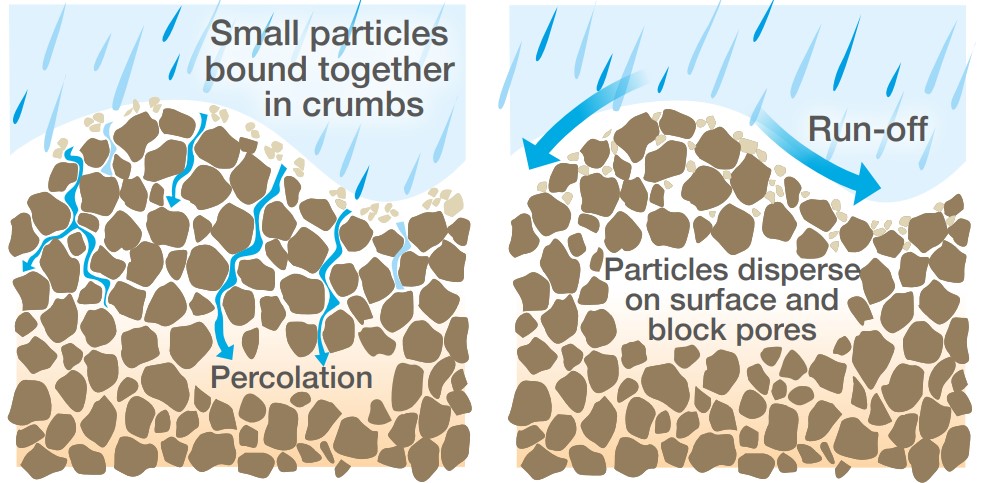- Home
- Knowledge library
- Soil pore network and infiltration
Soil pore network and infiltration
The size and distribution of pores determine not only the amount of water and air held in the soil but also how available that water is to plant roots and to soil organisms.
Water infiltration and movement through soil
Infiltration rate is the speed at which water enters through the soil surface.
Hydraulic conductivity describes how easily water moves through any soil layer.
Soil permeability (pore size, fissures and compaction) and moisture content affect conductivity.
Cracks and macropores allow rapid infiltration and movement between layers.
Smaller pores take longer to fill, and the movement of water into these pores relies on capillary forces, as well as gravity.
Soil capping
The pore network is most likely to collapse at the soil surface.
Wet aggregates are weak and easily broken by raindrops.
Soil particles become detached and block the coarser surface pores, markedly reducing infiltration rates, a process known as soil capping.

Drainage rates
Drainage rates are a combination of infiltration and hydraulic conductivity.
In most soils, the subsoil drainage rate controls drainage across the whole profile.
Water moves from wet areas to dry areas by capillary action. As this does not depend on gravity, water can move upwards, sideways and downwards.
Pore size
Smaller pores hold water with more force. This is why water moves more slowly in the very small pores associated with clay soils.
Generally, soils with larger pores, such as sands, drain more quickly and retain less water.
However, if water running through the profile encounters a layer of coarse material, it often stops until the soil above it becomes nearly saturated. This is because the water cannot enter the sand layer until the large pores can pull water into it.
A soil that becomes sandier with depth holds more water than its texture suggests.
Water retention
Devices such as neutron probes or WET (water content, electrical conductivity and temperature) sensors measure volumetric water content, but not all of that water is readily available to crops.
Following a heavy rain event, some water initially drains through the soil. It takes around 24 hours for the water to redistribute, by which time drainage pores greater than 30 μm in diameter will have emptied of water.
However, not all the water drains through and some is retained in the smaller soil pores.
Useful links
How to conduct a water infiltration test
Read more about soil porosity and soil structure
Find out more about how soil texture affects available water capacity for plants
Read the Principles of soil management guide
If you would like to order a hard copy of Principles of soil management, please use our online order form or call 0247 799 0069.
Have a question? Ask a member of the team:
.jpg)

